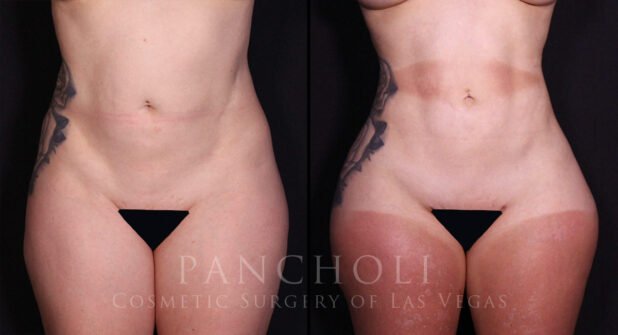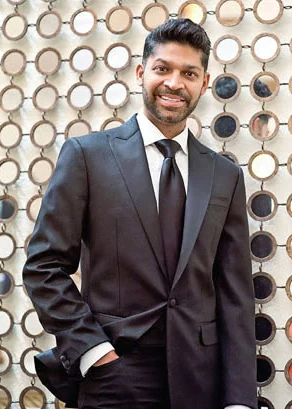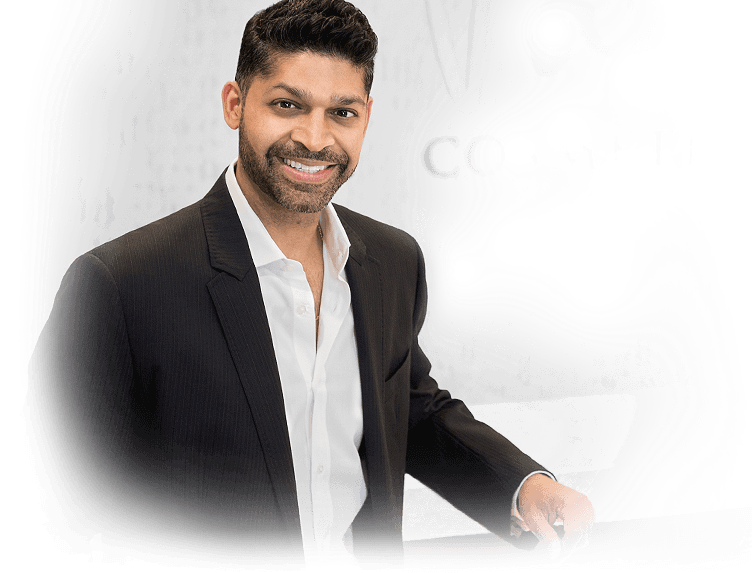Liposuction Surgery in Las Vegas
Para ver la pagina en Español haga click aquí.
If diet and exercise just aren’t providing the figure you desire, liposuction may be your answer. Although not an ideal substitute for weight loss, liposuction has become a popular way for people to achieve the body they want.
- What should I look for in a liposuction surgeon?
- How does liposuction work?
- Who is a good candidate for liposuction?
- Should I lose weight be before liposuction?
- How is liposuction performed?
- How long is liposuction recovery?
- What’s the difference between “regular lipo,” Smart Lipo and VASER liposuction?
- Can the fat cells come back after liposuction?
- Schedule a consultation with Dr. Pancholi
What should I look for in a plastic surgeon?
Choosing a cosmetic or plastic surgeon who has an experienced eye for shaping the body and prioritizes sculpting over fat removal can be key in achieving results that meet your expectations and goals. It’s not what fat is taken away, but rather what is left behind that provides the contours and curves we want. Dr. Pancholi understands this, and he can help you not only lose unwanted fat, but also reveal the stunning shape nature designed you to have.
Video transcript
“Liposuction is a fantastic procedure, and I think it’s one that I really get to show off artistic abilities and really get to show off you. So what that means is this: the biggest part of liposuction is trying to figure out how we can take what you have and make all the curves show up in all the right places. It’s one of the easiest procedures to do and one of the hardest ones to do well. And the reason is, it all comes down to anatomy, and it’s your anatomy. Every person’s different, and how do we bring your curves out to make you look the way that you want to look?”–Dr. Samir Pancholi
Reviews for
Dr. Samir Pancholi

"Dr. Pancholi was the last office I met with and I wish it had been the first! I ... read more"

"I absolutely love this place, I had an amazing personalized experience from day ... read more"

"In 1997 I saw Dr. William Canada. He was awesome he did a beautiful job and I lo... read more"
How does liposuction contour the body?
Liposuction surgery primarily targets the layer of fat deposits between skin and muscle. Its secondary target is the skin. The fat layer is treated by removing excess fat cells. This is most commonly performed with a suction cannula. The cells that are removed won’t “come back,” and the sculpted fat that remains helps provide your new shape and contour. While the cannula is busy removing fat, the skin is being stimulated to shrink. This helps the skin adapt to the new smaller body shape and size following the surgery.
While there are many different tools and technologies available for liposuction surgery, VASER ultrasonic liposelection is Dr. Pancholi’s “paint brush” of choice for precision sculpting, particularly in those wanting that fit, swimsuit ready look.
When VASER is utilized, the fatty layer is first treated with a thin probe that delivers ultrasonic energy tuned to target fat cells. The fat cells break apart and are then suctioned away with a cannula. This technique can provide Dr. Pancholi with greater precision when sculpting the body. Those wanting to maximize their shape can also consider utilizing the fat that is removed and having it placed elsewhere on the body such as breasts, hips, buttocks, and calves, what is called a fat transfer.
- Did you know liposuction is one of the number one cosmetic procedures for men too? Learn about male liposuction and the results it can achieve »
Liposuction to Sculpt the Lower Back
In this short video, Dr. Pancholi shows how he strategically sculpts an area to enhance a patient’s natural assets.
Warning: video contains graphic images of live surgery procedures. Viewer discretion is advised.
This contains graphic images.
Click to verify you are at least 18 years of age to view this video.
View more of Dr. Pancholi’s liposuction videos
Who is a good candidate for liposuction?
In the abdominal area, we store fat in two main areas: between the skin and abdominal muscles (extra-abdominal fat) and beneath the abdominal muscles and around the organs (intra-abdominal fat). Liposuction can treat extra-abdominal fat while intra-abdominal fat (the beer belly) is treated primarily with dietary changes. The ideal liposuction candidate is in good health, does not smoke, and does not have any major medical conditions.
It is very important to have a stable body weight with a realistic diet and exercise program. A person who gains significant weight after liposuction will typically gain weight elsewhere on the body while developing an odd and lumpy appearance where liposuction was performed. One who loses weight will typically improve in appearance up to a point until the skin can no longer contract to keep up with the fat loss. In this case, other surgical interventions may be needed to trim away and tighten the skin.
Before & After View Patient Results & Save Your Favorites >
This contains graphic images.
Click to verify you are at least 18 years of age to view all images.
Should I lose weight before liposuction?
When considering liposuction, your weight is key. Although most people have a goal weight in mind, this number should be achievable and maintainable. Crash dieting to an unrealistically low number on the scale will often result in rebounding back up to a weight that your lifestyle dictates.
A better approach may be to commit to a diet and exercise program that is realistic for you to reach and maintain a healthy, stable weight. Doing so before you have liposuction will help your results last longer and more likely result in you being able to return your regular diet and exercise program—and hopefully lose a few more pounds, rather than gaining weight and developing a look you may not like.
How is liposuction surgery performed?
Tumescent liposuction is the foundation for many liposuction techniques and has resulted in gentler liposuction with less swelling and an easier recovery. This technique involves using a saline solution containing an anesthetic agent (lidocaine) and a medication to shrink blood vessels (epinephrine), which work to limit post-operative pain and enhance recovery.
The amount of fluid and medication is customized for each patient and may be adjusted based on how many treatment areas are involved or other medications that you may be taking. This fluid is infused into the fat layer until the tissue appears swollen or “tumesced,” hence its name. After the fluid is given time to take effect, a small suction cannula is moved through the fat to specifically and purposefully remove targeted fat and sculpt an attractive shape to the body.
The cannula movement under the skin will stimulate it to shrink to a certain degree. The younger, tighter, or better condition the skin is in, the greater ability for the skin to shrink to your new shape and form.
After surgery, there will be some residual fluid in the area, which your body will absorb harmlessly over the next several weeks. Walking early in the recovery period helps to move the fluid out and is strongly encouraged. Also wearing a compressive garment, which we will provide, will help to compress the tissue, form your new shape, and remove excess fluid.
- Key Benefits
- Glossary
- Targeted Fat Reduction: Liposuction effectively removes stubborn fat deposits that are resistant to diet and exercise, targeting specific areas like the abdomen, thighs, buttocks, arms, and neck.
- Improved Body Contouring: By removing excess fat, liposuction can enhance body contours and proportions, leading to a more aesthetically pleasing and sculpted appearance.
- Boost in Self-Confidence: Many individuals experience a significant increase in self-esteem and body image after seeing the results of their liposuction.
- Motivation for a Healthier Lifestyle: The visible improvement in body shape can motivate individuals to maintain a healthy diet and exercise regimen.
- Minimally Invasive: Compared to other types of cosmetic surgery, liposuction is less invasive, typically requiring only small incisions.
- Quick Recovery Time: Recovery from liposuction is generally quicker than with more invasive surgical procedures.
- Long-Lasting Results: The fat cells removed during liposuction are permanently gone. However, maintaining a stable weight is important to preserve the results.
- Can Be Combined with Other Procedures: Liposuction is often used alongside other cosmetic surgeries, like tummy tucks or facelifts, for enhanced overall results.
- Reduction in Certain Health Risks: Removing fat, particularly abdominal fat, can reduce the risk of certain diseases like diabetes and heart disease, though liposuction is not a substitute for weight loss or a healthy lifestyle.
- Anesthesia: Medication used to prevent pain during surgery, which can be either general (inducing unconsciousness) or local (numbing a specific area).
- Cannula: A thin, hollow tube used in liposuction procedures to loosen and suction fat from the body.
- Compression Garment: A specialized garment worn by patients after liposuction to reduce swelling, support the treated areas, and help the skin conform to its new contours.
- Fat Cells: Cells in the body that store fat. In liposuction, these cells are targeted and removed from specific areas.
- Liposuction: A cosmetic surgery procedure that removes excess fat from specific areas of the body, such as the abdomen, thighs, buttocks, neck, or arms.
- Seroma: A collection of fluid that builds up under the surface of the skin, which can be a potential complication of liposuction.
- Subcutaneous Fat: The layer of fat located just beneath the skin, which is the primary target in liposuction.
- Suction-Assisted Liposuction (SAL): A traditional form of liposuction where a cannula is used to physically remove fat through suction.
- Tumescent Liposuction: A popular liposuction technique where a medicated solution is injected into fatty areas before the fat is removed to minimize bleeding and discomfort.
- Ultrasonic Liposuction: A type of liposuction that uses ultrasonic vibrations to liquefy fat cells before they are suctioned out.
- VASER Liposuction: A variant of ultrasonic liposuction that uses Vibration Amplification of Sound Energy at Resonance technology to target fat cells while preserving other tissues.
Liposuction: Sculpting vs. Fat Removal
The most experienced liposuction surgeons consider every line, curve and detail to sculpt an area, rather than just taking out fat. Dr. Pancholi shows his technique in this short video.
Warning: video contains graphic images of live surgery procedures. Viewer discretion is advised.
This contains graphic images.
Click to verify you are at least 18 years of age to view this video.
View more of Dr. Pancholi’s liposuction videos
How long is liposuction recovery?
You will feel achy and sore for the first 5-7 days. This will improve little by little over the next 3-4 weeks as the swelling decreases and your new shape starts to reveal itself. As the swelling decreases, your skin will shrink and may feel itchy. Your shape will continue to develop and improve over the next 3-6 months as your body continues to heal. Dr. Pancholi will tell you how much fat has been removed so you can have a better idea of what your new weight after liposuction is and to provide a new reference point for weight gain and loss.
Download our patient handout for info & resources about liposuction recovery
Video transcript
“So, liposuction, even though it’s one of our most common procedures that we do, is one of those procedures that requires a lot of the patient afterward. Although I want to make sure that you have all of the right curves when you get home, there’s a lot in hand. You want to make sure that you’re in your garment, that you’re wrapped in your foam properly, that you’re getting your massages, that you’re making sure your skin is being taken care of. We don’t want to have wrinkles or creases or anything else. If you’re bending or flexing at home, then that crease that’s in your garment is ending up being a crease in you.
So, there’s a lot of faith that I put in you that you’re going to go home and take care of yourself, and all of your support team is also looking out for you and making sure you heal well and come out the way you’ve always dreamed of.”–Dr. Samir Pancholi
Video transcript
“With liposuction, there’s always this concern of, “Is anyone going to know that I had liposuction done?” Unfortunately, we can’t make all of the scars go away, but we can certainly hide them in spots that people aren’t used to looking. We don’t want to have symmetrical scars; we want to put them in places that people aren’t naturally looking. But you will have scars, and there is scar therapy and there are lasers to help make the scars go away. But overall, we want to make sure that you take care of your incision sites so they heal the best that they can heal.”–Dr. Samir Pancholi
What’s the difference between “regular lipo,” Smart Lipo and VASER liposuction?
Other liposuction technologies work in conjunction with the tumescent technique. Laser liposuction (e.g., Smart Lipo) starts with the tumescent technique of saline solution infiltration and suction cannula removal to treat the fat layer. It then uses targeted laser wavelength to treat the skin. Using the skin as a target, the goal is to heat the skin from the inside to cause it to contract. Individuals with loose or thin skin can benefit from this added attention to the skin.
VASER Liposelection is gentler for a shorter, easier recovery
Ultrasonic liposuction (VASER Liposelection) starts by delivering tumescent fluid. Prior to any suctioning, a small probe is used to deliver ultrasonic energy to specifically target and emulsify fat cells. The emulsified fat then spills into the tumescent fluid and is gently suctioned out. This technique is thought to be gentler than standard tumescent technique since the fat cells are uniquely targeted and the nerves and blood vessels are left undisturbed, resulting in less damage, pain, and swelling compared to standard tumescent “suction first” methods.
VASER Achieves More Precise Sculpting and Improved Skin Contraction
The VASER technique provides Dr. Pancholi with greater precision when sculpting the body. Delivery of the ultrasonic energy can be customized to create the shadows, curves, and lines that make the difference between just a “thinner” look and a sculpted, shaped, and fit body. Additionally, the heat generated from the ultrasonic energy helps shrink the skin to a greater extent than tumescent liposuction alone, translating to better skin tone & appearance with your new slimmer shape.
Can the fat cells come back after liposuction?
The fat cells in the body increase in number until around puberty. At that point, the number of fat cells becomes fixed and they just shrink and grow with weight loss and gain. Since liposuction surgery removes fat cells, you will no longer experience the same pattern of fat gain and loss in those areas.
However, if an extraordinary amount of weight gain occurs, the body may start to make new fat cells again. This would provide an unfortunate appearance and is another reason that a stable body weight, diet and exercise program are important.
Why choose Dr. Samir Pancholi for your breast or body procedure?

Men and women from all over the United States choose Las Vegas cosmetic surgeon Dr. Samir Pancholi for his award-winning expertise, stellar bedside manner, and exceptional results. As an esteemed diplomate and former President of the American Board of Cosmetic Surgery, Dr. Pancholi has attained the highest level of training available in Cosmetic Surgery.
Dr. Pancholi’s practice is strictly committed to cosmetic surgery of the breast, body, and face. By specializing in breast augmentation, tummy tuck, facelift, Brazilian Butt Lift, and mommy makeovers, he has dedicated his skills to enhancing his patients’ shape, appearance and confidence.
Whether you’ve just begun considering a liposuction procedure or have been researching the procedure for a while, Dr. Pancholi and his team are here to help you through your plastic surgery journey. We’ll do our very best to provide you with the care and knowledge you deserve to make your surgery seamless and ensure you get the results you desire.
Learn more at a consultation
To schedule a consultation with Dr. Pancholi and see how your body can be shaped to achieve your aesthetic goals, please call or contact us online. The entire Cosmetic Surgery of Las Vegas staff are happy to answer any questions you may have about liposuction or other body contouring procedures, and are here to help you get started on improving your figure and your confidence.
References »
Yoshida S, Koshima I, Imai H, Roh S, Mese T, Uchiki T, Sasaki A, Nagamatsu S. Effect of Postoperative Compression Therapy on the Success of Liposuction in Patients with Advanced Lower Limb Lymphedema. Journal of Clinical Medicine. 2021 Oct 22;10(21):4852. doi: 10.3390/jcm10214852.
Shridharani SM, Broyles JM, Matarasso A. Liposuction devices: technology update. Medical devices (Auckland, NZ). 2014 Jul 21;7:241-51. doi: 10.2147/MDER.S47322.
Wu S, Coombs DM, Gurunian R. Liposuction: Concepts, safety, and techniques in body-contouring surgery. Cleveland Clinic Journal of Medicine. 2020 Jun;87(6):367-375. doi: 10.3949/ccjm.87a.19097.
Bellini E, Grieco MP, Raposio E. A journey through liposuction and liposculture: Review. Annals of Medicine and Surgery. 2017 Nov 6;24:53-60. doi: 10.1016/j.amsu.2017.10.024.
Area Served



